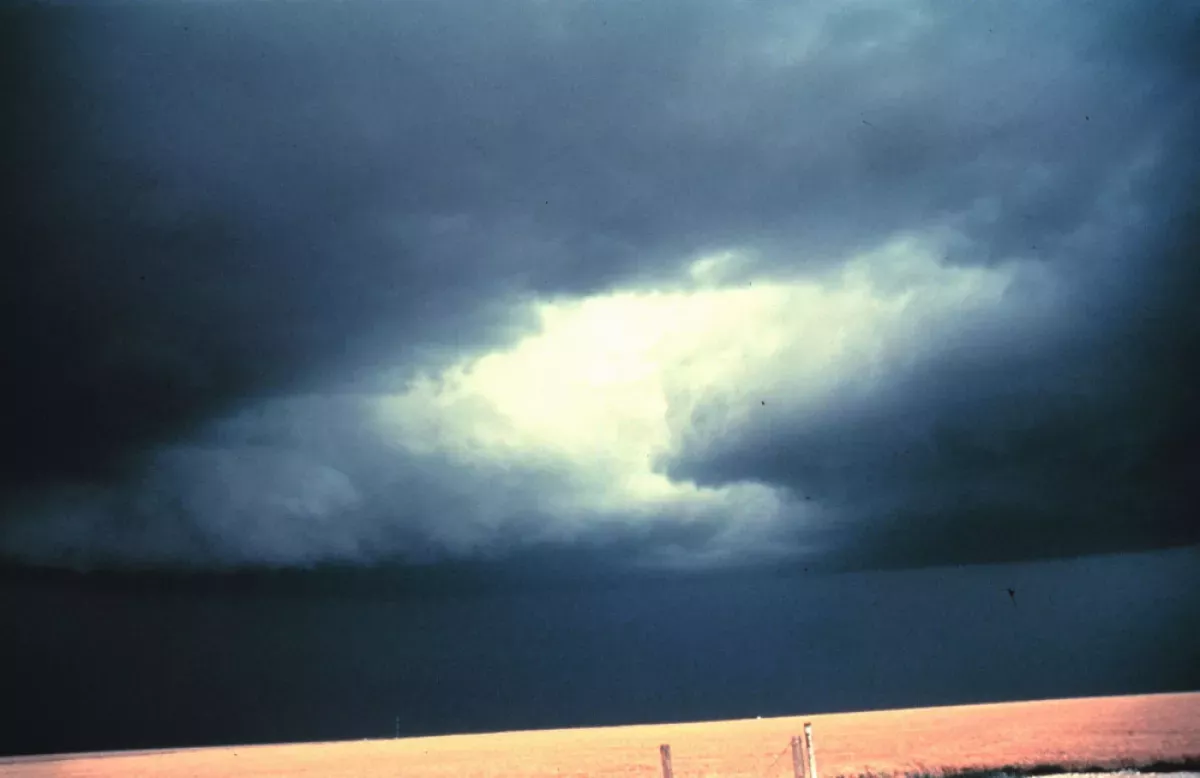A severe thunderstorm warning is issued by weather agencies when severe thunderstorms are imminent or occurring, posing a threat to life and property. These storms are characterized by large hail, high winds, and torrential rainfall, potentially leading to flooding, damage, and injuries. Warnings are issued for areas in the direct path of the storm, typically expecting impact within an hour. Issuance criteria vary by country. The warning indicates an immediate threat, unlike a watch, which signals potential for severe weather.
October 2007: Change in severe weather warning issuance
Prior to October 2007, the National Weather Service issued severe weather warnings on a per-county basis. Afterwards, local NWS forecast offices started outlining warnings for tornadoes and severe thunderstorms in polygonal shapes.
January 2010: Hail size criteria upgrade for severe thunderstorm warnings
In January 2010, the National Weather Service upgraded the hail size criteria for a thunderstorm to be considered severe from 0.75 inches to one inch in diameter. This change was due to public complacency from frequent warnings and studies showing hail didn't cause significant damage until it reached one inch.
March 2012: Implementation of Impact Based Warning system
In March 2012, the National Weather Service implemented a multi-tier Impact Based Warning (IBW) system. This system notified the public and emergency management officials of the severity of specific severe weather phenomena. Severe thunderstorm warnings and associated Severe Weather Statements included event tags providing estimates of straight-line wind speeds, hail size, and potential tornadic development.
March 2013: Expansion of Impact Based Warning system
In March 2013, the Impact Based Warning system, initially implemented at six NWS offices in Kansas and Missouri, was expanded to 33 additional Central Region Weather Forecast Offices (WFOs).
2013: Impact Based Warning system introduced to the public
In 2013, the categorical criteria were introduced to further explain to the public the dangers of some thunderstorms that can produce massive hailstones that may severely injure or kill a person and winds that can cause damage equivalent to hurricanes and tornadoes. Initial warnings and Severe Weather Statement updates containing the "destructive" tag are disseminated into the Wireless Emergency Alerts system.
March 2014: Further expansion of Impact Based Warning system
In March 2014, eight additional Weather Forecast Offices (WFOs) operating within the Eastern, Southern, and Western Region divisions began using the Impact Based Warning indicators.
2016: Full agency implementation of Impact Based Warning format
In 2016, the entire National Weather Service agency began using the Impact Based Warning format.
August 16, 2019: Inclusion of "emergency" wording in Severe Thunderstorm Warning
On August 16, 2019, the National Weather Service in Cheyenne, Wyoming, incorporated the "emergency" wording into a Severe Thunderstorm Warning to denote that three-inch diameter hail was imminent in portions of Scotts Bluff, Banner, and Sioux Counties in Nebraska.
July 28, 2021: Incorporation of categorical damage threat indicators
Starting July 28, 2021, the National Weather Service incorporated categorical damage threat indicators for higher-end hail and/or wind events at the bottom of text products for severe thunderstorm warnings, including update statements issued as Severe Weather Statements.
Mentioned in this timeline

Thunderstorms also known as electrical or lightning storms are characterized...
The National Weather Service NWS is a US federal agency...
Kansas is a Midwestern U S state bordered by Nebraska...
Wyoming located in the Mountain West region of the US...
Nebraska located in the Midwestern United States is the th...
Trending

9 months ago Keith Urban Discusses Love Songs, Vocal Surgery Impact, and Musical Experimentation

4 months ago Kevin O'Leary on Success, Steve Jobs, and Prenups: Key Insights Revealed

1 month ago Bradley Cooper directs Will Arnett and Laura Dern in the dramedy 'Is This Thing On?'

9 months ago Bucks Defeat Kings: Giannis' Dominance and Keegan Murray's Performance in a Tense Match
7 months ago JuJu Watkins Recruiting Impact: Byles Visits USC, Watkins' GOAT Choice Revealed.

2 months ago Ben Stiller Opens Up About Feeling Like a Failure During Separation From Wife
Popular

Candace Owens is an American conservative political commentator and author...

Tucker Carlson is an American conservative political commentator known for...

XXXTentacion born Jahseh Dwayne Ricardo Onfroy was a controversial yet...

Ben Shapiro is a prominent American conservative political commentator media...

William Franklin Graham III commonly known as Franklin Graham is...

Bill Gates an American businessman and philanthropist revolutionized personal computing...
